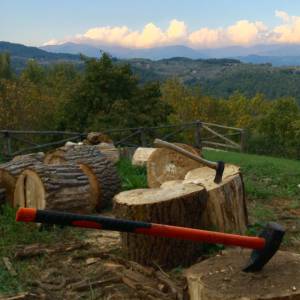The Arno at Sieci
We've got people coming around later for a first BBQ. I bought peppers, zucchini, melanzane (aubergines), chicken, fresh anchovies and some sausage and a little bit of pork spare rib from the butcher in the Co-op. I told him that I was bemused by Italian cuts of meat.
A woman standing beside me said that she liked to cook meet although she had never really understood the different cuts of beef. She was about my age.
I said to the butcher that one day I'd come down and ask him to explain how it all worked. 'We'll give you a bit of schooling' he jovially said. He is a very nice man.
I bought cakes and some of that wine on-tap I have mentioned earlier. I also bought a 5L box of Morellino di Scansano that is made in southern Tuscany near Grossetto.
I strolled along the river in the fitful sun. The 100th Giro d'Italia will pass by on the other side of the Arno on Wednesday. The stage leaves from the birthplace of one of the Giro greats, Gino Bartali, who was born in 1914 at Ponte a Ema on the south eastern edge of Florence.
Italian Land Classification: A Linguistic Cautionary Tale
Land in Italy is divided up into 'particelle' (parcels) that are supposed to be of an homogeneous classification - for example, vineyard, chestnut forest, irrigated agricultural land etc. There are 75 million 'particelle' in the Italian national territory.
When looking at the land we are buying one of the land classifications of note is that of 'seminativo'.
I have often seen this and unthinkingly I thought, if you will, that this translated as 'semi-native': that is, land that is returning to its native condition and is composed of small trees and scrub.
A particular parcel of land is then given a quality from 1 (the best) to 5 or below (the worst).
Today I looked into this whole classification and quality issue again and I discovered that the Italian 'seminativo' has absolutely nothing to do with the English 'semi-native'.
In fact the stand-alone word 'semi' does not appear to exist in Italian except as the plural of 'seme' - seed. 'Semi' are then seeds and the word has nothing to with notions of 'half' . (Although apparently the English 'semi' derives from Latin and there is a word like 'semicotto'
meaning half-cooked or -baked - rather like this tale you might think.)
So 'seminativo' instead of having some quasi-romatic notion of 'returning to the wild' as I had thought actually means 'sowable': that is, land that is capable of being cultivated with hand or mechanical tools to produce a crop from sown seed. From the Italian verb 'to sow' which is 'seminare'.
The fact is that much land that is classed in Tuscany as 'sowable' is also semi-native in that it has been abandoned and is going through a progression from scrub and to the so-called climax species of one of a number of types of woodland - often based on altitude - oak, chestnut, beech.
But the whole purpose of the classification system was not only to show what a piece of land was capable of or was more likely used for at the time it was classified (a long process that took over 70 years from Italian Unification in 1861 onwards as a unified system of land measurement and classification was hammered out from the nine systems in play at Unification).
It was also to show the potential income that could be derived from a piece of land and hence the tax that could be levied on that income.
So a piece of land that is classified as 'seminativo' that may in fact be semi-native in its current state of ground cover (brambles, blackthorn, scrubby oak, ash etc) is actually a class of land that would bear the greatest tax as the most productive land. This may have a bearing on the purchase tax charged on the different types of land we are buying.
This is probably more information than anyone needs on Italian land classification but I was awestruck and amused at my simple unthinking misreading of one word.
As a final thought the document I have been reading in Italian Land Classification suggests that the current method of determining land and agricultural taxes is incredibly archaic and inaccurate. Land price is now determined largely by the price of product that can be derived from it (notwithstanding the impact of land scarcity and investment in land at a time of rising prices that can fuel itself if alternative sources of investments return are lacking) on the open market with all the different subsidies and tariff protections that exist to protect or diminish prices.
In fact, Italian agriculture has been seen as a weak sector of the economy since the 1930s and the archaic land and agricultural tax system that is still applied to it tends to seriously underestimate the income derived from it rather than vice versa.

Comments
Sign in or get an account to comment.


